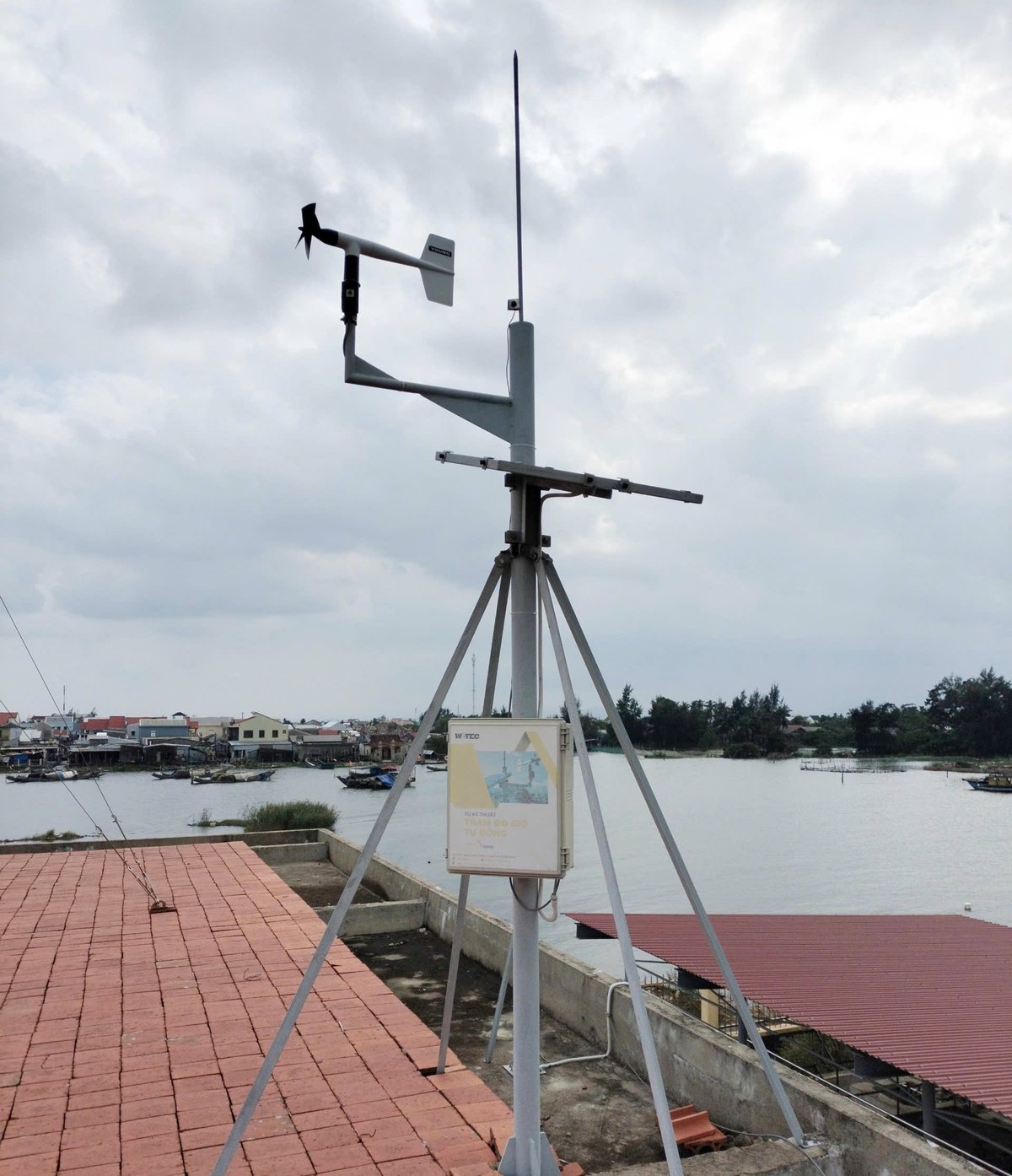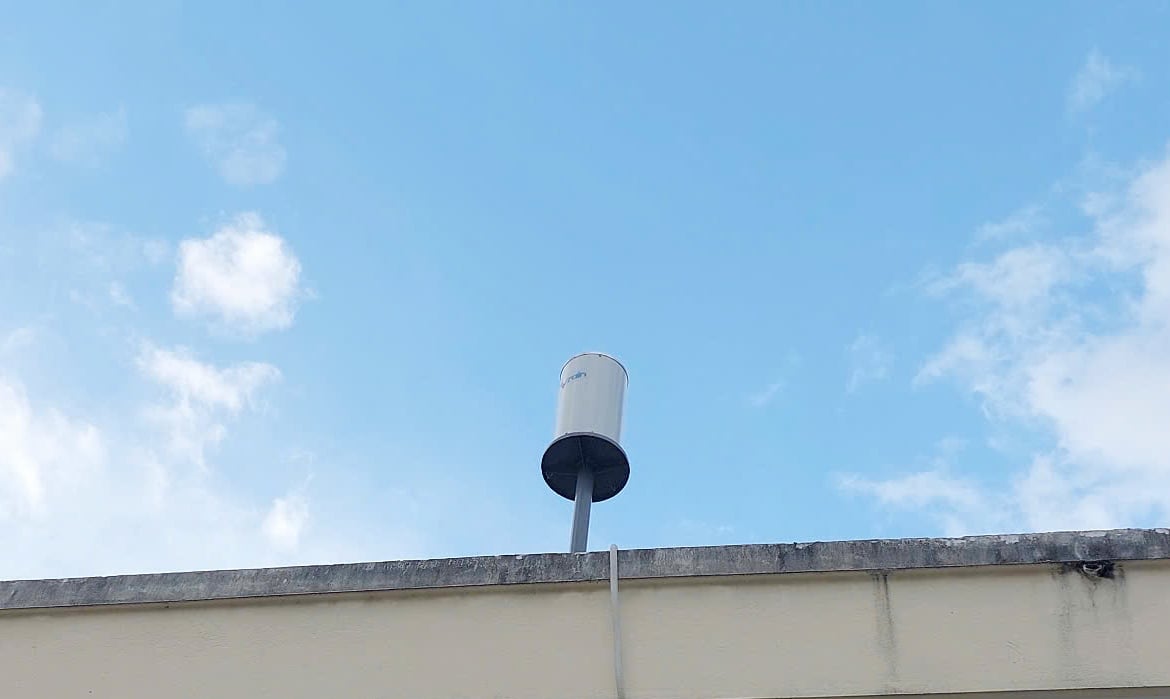December 31, 2025 | 21:28 GMT +7
December 31, 2025 | 21:28 GMT +7
Hotline: 0913.378.918
December 31, 2025 | 21:28 GMT +7
Hotline: 0913.378.918
In recent years, natural disasters in Hue have increased both in intensity and frequency. Especially severe floods occurred consecutively in 2020, 2022, and 2023, causing severe flooding and landslides. For example, in 2020, abnormal and severe natural disasters resulted in 41 deaths and 11 missing persons; thousands of houses were destroyed or had their roofs torn off. In 2024, the historic heatwave from April 27 to May 1 broke all temperature records that had stood for nearly 50 years in Hue.
To respond to natural disasters, besides being prepared and proactively implementing prevention measures, Hue city also places special emphasis on hydrometeorological forecasting, warning, and communication. This is extremely important and indispensable in helping people raise awareness and contribute to minimizing the damage caused by natural disasters.

The automatic monitoring station system in Hue city contributes to hydrometeorological forecasting, warning, and communication. Photo: Van Dinh.
Mr. Nguyen Van Hung, Director of the Hue Hydro-Meteorological Station, stated that in recent times, the meteorological and hydrological sector has undergone many innovations in forecasting and warning activities, applying modern technologies and achieving certain advancements. The General Department of Meteorology and Hydrology (now the Viet Nam Meteorological and Hydrological Administration) has been invested in by the government, equipped with machinery and devices, and upgraded its computer systems; including the HPC CRAY supercomputer system to run high-resolution dynamic meteorological forecast models that provide relatively accurate predictions, consistent with actual weather and disaster developments.
Currently, in Hue city, weather radar images from Dong Ha and the X-Band radar from the Jiaca project, funded by the Japanese government, are used very effectively to monitor, forecast, and warn about rain and storms. Additionally, there is an automatic monitoring station system with over 70 stations, including four wind-measuring stations, 10 stations that measure rainfall and water levels simultaneously, and more than 60 automatic rainfall stations associated with various projects. Among these, 49 automatic rainfall stations are part of the Vrain system. Most stations operate stably with full and continuous data, effectively supporting meteorological and hydrological forecasting and warning efforts.
"Meteorological and hydrological information serves as input for all industries and sectors, including agriculture. The application of modern science and technology in weather forecasting provides accurate information that closely reflects the actual weather developments at the local level. This helps effectively monitor crop growth and control pests and diseases. In addition, it enables agricultural managers to calculate optimal planting and harvesting times, thereby minimizing crop losses caused by natural disasters and epidemics," Mr. Hung emphasized.

The application of modern science and technology in weather forecasting helps minimize crop losses caused by natural disasters and epidemics. Photo: Van Dinh.
According to the Steering Committee for Natural Disaster Prevention and Search and Rescue of Hue city, they have focused on and strengthened the application of information technology and social media in disseminating disaster forecasts and warnings. Before each period of heavy rain and floods, the unit organizes serious shifts to closely monitor dangerous weather developments; proactively issuing early warnings from 48 to 72 hours in advance, using interactive flood and storm prevention features on the Hue-S digital platform (under the Hue city Intelligent Operations Center - IOC), the hotline 19001075, and the city’s interactive pages; and employing an SMS messaging system to send operational commands, warnings, and disaster forecasts to authorities at all levels and residents.
In 2024, the city piloted the installation and activation of two high-powered sirens (with an effective radius of 5 km) to warn and notify residents to limit outdoor activities during strong winds caused by storms, heavy rains, and floods, thereby contributing to reducing disaster losses. Similarly, during hot seasons, warning bulletins are continuously updated.
“The application and use of information technology for disaster reception and warning in Hue city in recent years have advanced significantly compared to earlier times. Early warning information technology has been widely applied, featuring numerous user-friendly utilities, software, and applications. This is highly meaningful and plays an important role in helping to handle situations quickly and timely, as well as enhancing the capacity for disaster response and prevention for officials and the community. This, in turn, contributes to socio-economic development in general and the agricultural sector in particular,” shared Mr. Dang Van Hoa, Chief of Office of the Steering Committee for Natural Disaster Prevention and Search and Rescue of Hue city.

Hue City has also focused on applying information technology and social media in disseminating disaster forecasts and warnings. Photo: Van Dinh.
It is known that in disaster situations, Hue Telecommunications will deploy a communication system including 2 satellite phones; a CODAN shortwave radio system with 100W power; and a Kenwood very high frequency (VHF) radio system capable of communication over distances of 30–50 km. At the same time, Kenwood walkie-talkies are deployed at several irrigation and hydropower reservoirs in the area, ICOM radio systems are in place at some districts and towns, and several mobile vehicles are equipped to support on-site command operations.
According to Hue city leaders, the city will continue to strengthen the application of science and technology in disaster forecasting. Hue also explores and promotes scientific research in the fields of artificial intelligence (AI) and Big Data to enhance the capacity of forecasters and the quality of forecasting products. In addition, efforts will be increased in hydrometeorological communication to help residents access and effectively use forecasting and warning information.
During the storms and floods of November 2023, the Hue IOC Center received nearly 700 support requests from residents. Among them were 230 cases involving severely flooded homes requiring evacuation to higher ground, hospital transfers, and pregnant women in need of urgent care. Previously, during the historic floods of October 2020, the Facebook pages of the Office of the Steering Committee for Natural Disaster Prevention and Search and Rescue of Hue City and the Hue IOC Center reached over 30 million people, with more than 9 million interactions across nearly 600 posts containing updates and warnings.
Translated by Phuong Linh

(VAN) From extensive shrimp ponds, baskets of don gathered on the mudflats, to boats carrying visitors to watch birds, all livelihoods here depend on clean water, green forests, and the calls of migratory birds.
/2025/12/26/0703-3-204813_117.jpg)
(VAN) Transparency in information and listening to local people have helped address ground clearance bottlenecks and build social consensus, thereby accelerating the progress of the JICA3 irrigation project.
/2025/12/27/0609-3-233846_327.jpg)
(VAN) The JICA3 project is expected to become a 'water shield,' helping control saltwater intrusion, proactively secure water resources, protect livelihoods, and promote sustainable development in coastal areas.
/2025/12/26/5654-3-164509_655.jpg)
(VAN) As Viet Nam makes strong commitments toward achieving net-zero emissions, controlling and reducing methane emissions in livestock production is increasingly becoming a mandatory requirement.

(VAN) 'People, Primates, Plants: Co-managing Biodiversity and Improving Livelihoods in Vietnam' (the PPP Project) is an international initiative implemented in Vietnam by BGCI, CEGORN, and ICRAF/World Agroforestry.

(VAN) Dak Nong established a risk-level zoning map for coffee, built a digital data platform for the sector, and promoted certified production in line with EUDR.
/2025/12/25/2709-1-211551_295.jpg)
(VAN) In response to the U.S. Marine Mammal Protection Act (MMPA), Gia Lai province is implementing many solutions to protect marine mammals and develop sustainable, responsible fisheries.